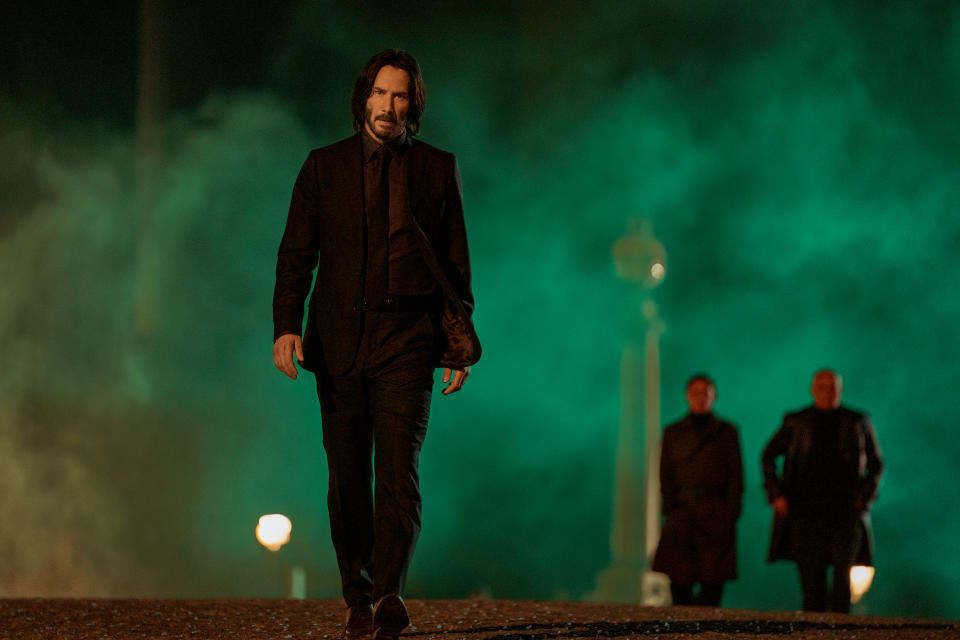It's Time to Say a Loving Goodbye to John Wick

Credit - TIME; source images: Getty (2)
The allure of a franchise is that it offers more of something you love, ostensibly buffed up and freshened—it’s newness with sameness built in. The James Bond movies, the Thin Man comedies of the 1930s and 1940s, a long, undulating string of Rocky pictures stretching from 1976 to pretty much yesterday: franchises are nothing new, because the instant Hollywood sees one dollar sign, it starts sniffing the trail for the next. Audiences respond as they’re conditioned to, wanting more of something they loved last year, or the year before, or even in the previous decade. In the case of the Marvel Cinematic Universe, the cycle is apparently endless, perhaps stretching beyond even our children’s lifetimes. No one who’s making money off a current franchise wants to ask the multi-million-dollar question: what if the most elegant and dignified thing a franchise can do is…end?
Specifically, is it time to say good-bye to John Wick?
The answer presented by John Wick: Chapter 4—nearly three hours of gorgeously staged practical action sequences, and a heavy dose of Keanu Reeves as the dolorous existential hit man of the title—is a resounding maybe, not because the film isn’t satisfying, but because it is. And as a person who adored the first film—and who has enjoyed every sequel so far, on a scale ranging from greatly to moderately—I can’t shake the sense that the series is pushing its luck.

My taste for movie violence is specific and antiquated, a kind of dinosaur love. Movie violence isn’t what it used to be; it has become something of a lost art. Audiences have been conditioned to think fast, choppy cutting is exciting by itself, which means action sequences are often sliced-and-diced into an illogical coleslaw. You can’t tell who’s coming from where; you barely get a chance to savor the sight of bodies in motion, clashing, stumbling, clutching at one another in a wild, feral embrace. Forget the bloody, balletic exhilaration of movies like Bonnie and Clyde and The Wild Bunch, or John Woo’s 1990s Hong Kong action extravaganzas: movie-action craftsmanship took a turn for the worse in the early 2000s, and with the ascent of the Marvel universe—movies in which the ostensibly exciting action sequences are literally nearly all the same, and heavily doctored with CGI—the discipline and clarity of thought necessary to make a good fight scene seemed all but lost.
Read more: Why It Took Keanu Reeves 30 Years to Become an Overnight Sensation
But the 2014 John Wick—directed by Chad Stahelski and David Leitch, guys who’d actually worked as stuntmen—was different. The action sequences had been choreographed into episodes of thrilling, brutal beauty, blocked with care and edited with painterly precision. Weighing in at a trim, tough 96 minutes, it was as bold as a fist, plucky and defiant, with a smoldering movie star at its heart. No wonder audiences fell in love with it and, specifically, with Reeves-as-Wick. Though he’d already had a long career of almost unequivocal likability, John Wick pushed him into a new realm. You could almost diagram the movie’s blunt emotional efficiency with a series of arrows and stick figures. Here was a suffering hero, a killer trying to turn over a new leaf, who’d just lost his beloved wife to cancer—and then vengeful baddies kill the small, adorable dog she’d left him as a comfort. No one could blame Wick for kicking back against those villains, but he was also kicking out at the unfairness of the world. John Wick represented a new breed of action-noir, with a hero who drew from the tough-but-tender repertoire of great noir figures like Robert Mitchum and John Garfield, men who couldn’t be duped by anything but love—it would always be their undoing. Wick, a man who’d lost love through no fault of his own, was the ultimate fatalistic romantic hero, a man so broken he had nothing left to lose. His killing-machine amorality was both tragic and cathartic.

 Yahoo Autos
Yahoo Autos 